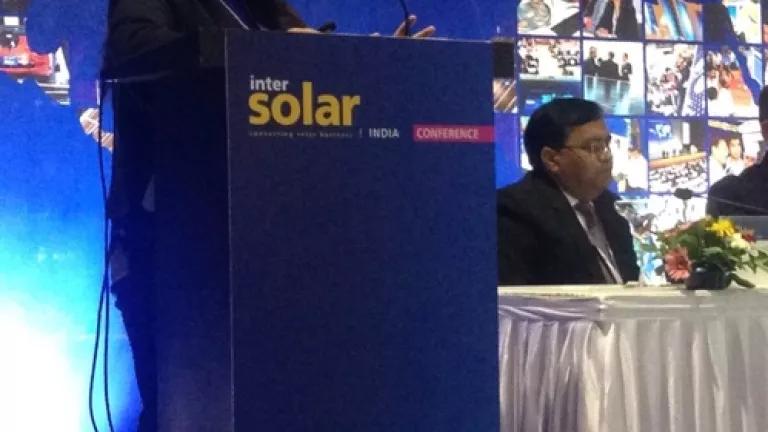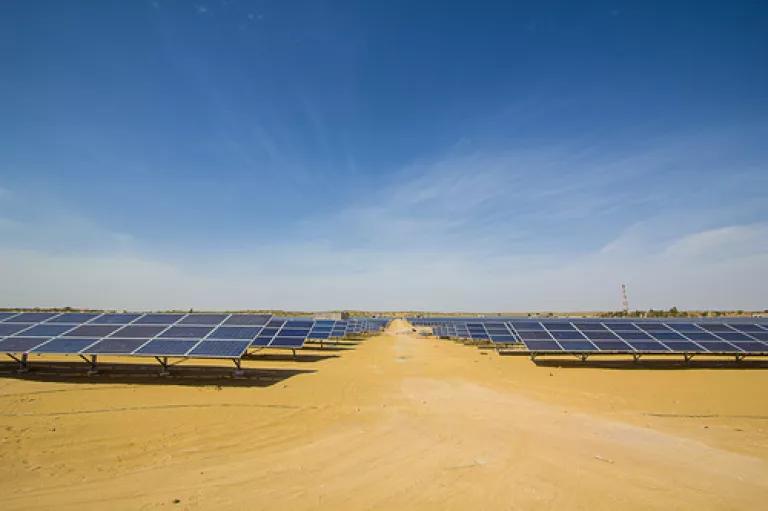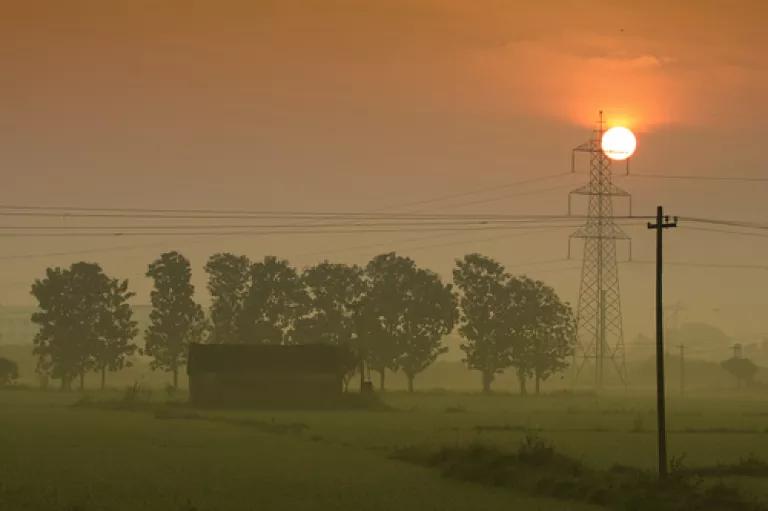
With the climate change negotiations in Paris just two weeks away, the world's biggest economies have made bold pledges to reduce carbon emissions and accelerate clean energy solutions. The momentum building to deploy expansive solar and wind energy is palpable here in New Delhi. Prime Minister Modi has announced plans to launch a International Solar Alliance during the Paris negotiations to drive markets in solar-rich countries around the world. The Ministry of New and Renewable Energy (MNRE) announced several new initiatives today at Intersolar India, the domestic solar industry's largest exhibition and conference, including the establishment of new 'solar zones' to encourage private sector development of huge solar projects.
Attracting some of the biggest names in solar energy, Intersolar participants include leading domestic and international companies and many states' energy ministers. It was announced that state-level solar projects on track to be commissioned next year may become the four largest solar projects in the world once fully built.
The Government of India is balancing the need for climate action with rapid development and providing energy for its urbanizing cities and rural villages, including 300 million people without access to modern electricity. To build a low-carbon future and curb climate change, the Indian government has committed to 175 gigawatts (GW) of renewable energy by 2022, including 100 GW of solar and 60 GW of wind energy, and adopted a suite of ambitious climate actions as part of the Paris climate agreement.

Construction of a solar power plant in Rajasthan. © Bhaskar Deol, NRDC
India's flagship National Solar Mission is still struggling with barriers to scaling the 4 GW solar market to reach the ambitious 100 GW solar target within 7 years. Challenges include attracting large-scale affordable financing, enforcing the Renewable Purchase Obligation (RPO), the financial health of power distribution companies (DISCOMs), and land acquisition.
In a key policy change, MNRE announced at Intersolar that it is revising the RPO to strengthen enforcement and create a separate 8-10% RPO strictly for solar energy until 2022. MNRE's new initiative to create 'solar zones' could help solve some persistent transmission and land acquisition issues. The Ministry of Power has also announced a plan to help alleviate the liabilities of debt-ridden DISCOMs that make them reticent to purchase electricity generated by solar projects.
NRDC's Nehmat Kaur highlighted opportunities for market and finance innovation at Intersolar to help secure more financing for renewable energy and demonstrate its economic benefits. Based on analysis by NRDC and our partner Council on Energy, Environment and Water (CEEW), if India achieves its target of 100 GW of installed solar energy by 2022, as many as 1 million full-time equivalent (FTE) jobs could be created. Between 2011 and 2014, 24,000 FTE jobs were generated through solar photovoltaic (PV) projects alone. The rapid expansion of clean energy installations creates green jobs and supports local economies. Looking ahead, the provision of job creation numbers by Indian companies can help guide policy decisions as the framework is developed for how India will achieve the National Solar Mission's 2022 target.

Electrical wires in Chennai. Photo by Vinoth Chandar under Creative Commons licensing.
NRDC and CEEW are also holding a roundtable series and analyzing existing gaps in solar certification and training programs to recommend policies to support the creation of a skilled workforce able to build and operate solar projects around the country. Early findings include that skilled workers are needed in unelectrified villages to install, electrify, operate and maintain solar power operation (appx. 600,000 such villages exist). According to the solar industry, the top challenge to hiring employees to install solar energy projects in India is currently a lack of availability of skilled workers. There are also geographical gaps. Skill trainings for electrical, operations & maintenance need to happen locally, meaning new and expanding training programs must prioritize geographical diversity.
On the financing front, recent examples of sustainable finance - including green bond issuances by government, private sector banks and equity and debt listing by companies - indicate significant progress being made in overcoming financing barriers. An NRDC-CEEW joint Initiative for Clean Energy Finance is exploring the prime opportunities to strengthen existing domestic financing channels and to foster new channels and products. Thus far, emerging finance solutions include green bonds to raise capital through the debt markets, green banks, and dollar-linked power contracts to attract international investment.
As the Paris climate change summit approaches, this momentum to propel India's clean energy markets forward is critical. India's role in the climate negotiations is "pivotal," as France's Foreign Minister commented today in New Delhi. With strong leadership, India can support and enable a needed scaling up of the renewable energy sector to sustainably power its future and help mitigate climate change's worst impacts.
